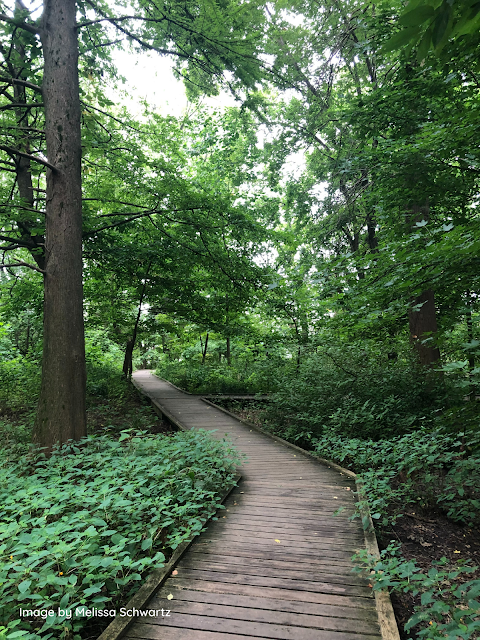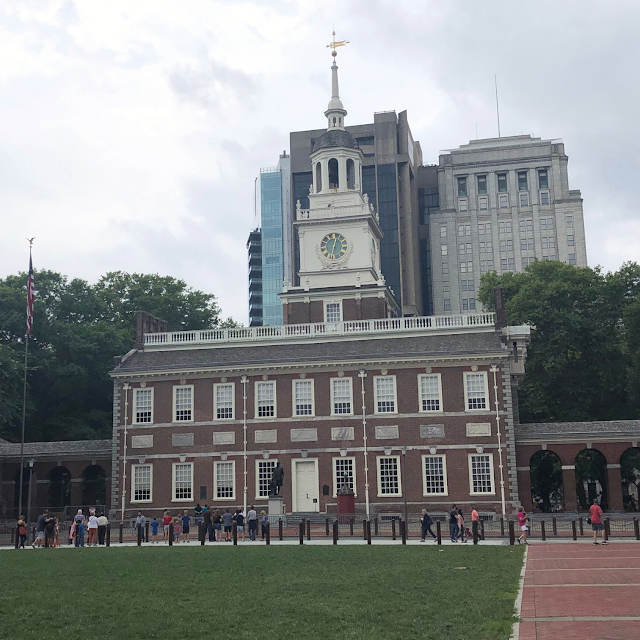Botanical gardens in America find roots in Bartram's Garden in Philadelphia. Philadelphia played such a pivotal role in the history of the USA, it is no shock that roots of early American scientific inquiry can be found in the city as well. Bartram's Garden easily fascinated us while delighting us with the joys of nature.
 |
| Bartram's charming colonial home was constructed in 1731 and does include later additions. |
John Bartram purchased a tract of 102 acres of land from Swedish settlers in 1728 and began collecting seeds and plants from all over North America. Bartram became a notable botanist even earning the title of "Royal Botanist" from King George III. He would also figure prominently in the trade of seeds and plants. The original Bartram stone house still on site was constructed in phases over 40 years with the original colonial home being completed in 1731.
 |
| Bartrarm's Garden holds several robust and striking gardens. |
The Family Love of Botany Continues
John Bartram's son, William, would carry on the family passion for botany becoming a naturalist, author and artist. William's niece, Ann Bartram Carr, would eventually take over the family garden. She learned from her Uncle William and would expand the garden to over 1,400 native species and 1,000 exotics with four greenhouses at the peak.
 |
| Lovely little pond full of wetland vegetation at Bartram's Garden. |
The Carr family would undergo financial issues and the garden, unfortunately, had to be sold. Andrew Eastwick, an industrialist, purchased the garden keeping it as a private park. After his death, an effort emerged to preserve the garden. In 1960, Bartram's Garden was designated as a National Historic Landmark. Fortunately, this treasure has been saved! Bartram's Garden is the oldest surviving botanic garden in the US delighting and educating us to this day.
The core of Bartram's Gardens plant collections are native species the Bartram family studied and cultivated. Included is a medicinal garden which is pretty interesting for those of us exploring the healing properties of plants. John Bartram was a notable of his time and helped found the American Philosophical Society along with Benjamin Franklin. The garden was well known during the colonial era and was visited by Franklin, George Washington, members of the Continental Congress and more.
 |
| Boardwalk through the wetlands of Bartram's Garden towards the Schuylkill River. |
In addition to the gardens, we enjoyed a walk along the boardwalk near the Schuylkill River. The garden provides access to the river for the public and a place where they can launch boats. Bartram's Garden provides a host of activities and experiences for the public. Admission is free, so such a worthy addition to any Philadelphia trip. Donations are much appreciated and help keep this remarkable landmark thriving.
An Amble Through Early American History in Philadelphia
After our visit to Bartram's Garden, we headed to Philadelphia's Old City. We created our own little hodgepodge tour for the day. We began at Elfreth's Alley, one of the oldest continuously lived on streets in America. The row homes on the alley date from 1703-1832. After, we headed to the historic Christ Church Burial Ground and then Betsy Ross House.
 |
| Elfreth's Alley in Philadelphia displays early American architecture in the form of row houses. |
As we continued through the avenues of Philadelphia, we headed to Independence Hall and the Liberty Bell. We walked through the President's House exhibit which addresses the paradox of slavery and the freedoms of the new nation. A home on this site was lived in by George Washington and John Adams. The display does take some time to explore and absorb. Exhibits address the contradiction between Washington's service and his role as a slaveholder. The original home was demolished in 1832. However, foundations have been excavated and can be viewed.
 |
| Admiring Independence Hall from the lawn. |
Visiting the historic district provides so many avenues for unique and educational Philadelphia adventures. We always enjoy a visit and are charmed by the history and colonial architecture! After our adventure to Bartram's Garden, we will add return visits to future Philadelphia excursions to savor a different aspect of early American life. Quite a powerful pair!



Post a Comment